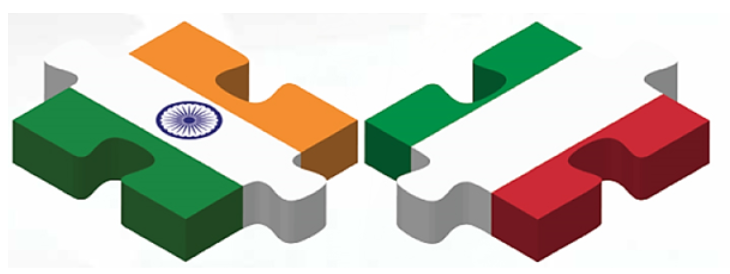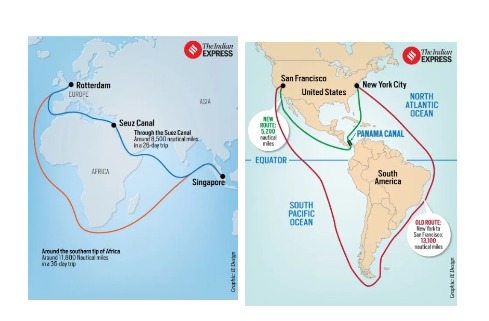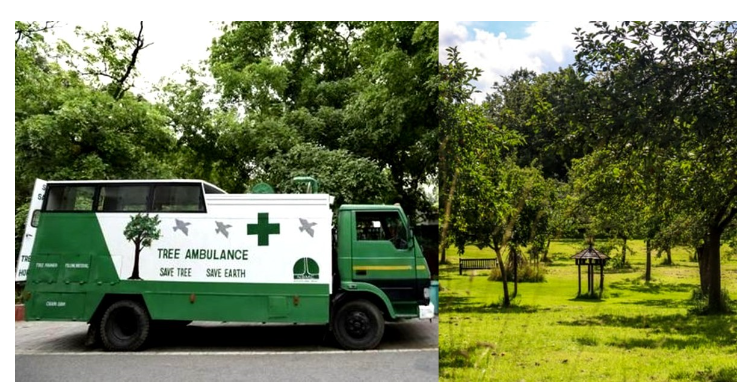Thursday, 4th January 2024
Innovative Technologies Introduced in MGNREGA Implementation
In News: The Ministry of Rural Development addresses concerns over technology, including Aadhaar, causing delays in MGNREGA wage payments and denial of welfare benefits.
MGNREGA Scheme Overview
Launched in 2005 by the Ministry of Rural Development, MGNREGA is a global leader in work guarantee programs, ensuring 100 days of employment annually for adult members of rural households through unskilled manual labor on public projects.
Current Status of MGNREGA
With 14.32 crore registered Job Cards and 25.25 crore workers, the scheme boasts 68.22% active Job Cards and 56.83% active workers.
Technological Innovations in MGNREGA Implementation
- Aadhaar Integration
- Involves continuous Aadhaar seeding for de-duplication and authentication.
- 14.08 crore (98.31%) active workers have Aadhaar seeding, enabling Aadhaar Payment Bridge System (APBS).
- APBS success rate is 99.55%, facilitating electronic subsidy transfers to Aadhaar-linked bank accounts.
- National Electronic Fund Management System (NEFMS)
- Introduced in FY 2016-17 for direct wage payments to beneficiaries.
- Over 99% of wage payments are directly credited to beneficiaries' bank/post office accounts.
- Real-time Monitoring through NMMS
- National Mobile Monitoring System (NMMS) app captures real-time attendance at worksites, ensuring transparency.
- Beneficiaries and citizens can verify worker attendance.
- Geotagging of Assets
- Utilizes remote sensing technology for geotagging created assets.
- Enhances public scrutiny and accountability by providing location-specific information.
- Job Card Updation
- States/UTs conduct regular exercises for job card updation/deletion.
- Job cards are deleted for reasons such as fake/duplicate cards, unwillingness to work, and household relocation.
- Drone Monitoring
- Pilot testing of drone usage for real-time monitoring and data collection.
- Enhances implementation efficiency and decision-making processes.
|
UPSC Previous Year Questions Prelims (2011) Q. Among the following who are eligible to benefit from the “Mahatma Gandhi National Rural Employment Guarantee Act”? (a) Adult members of only the scheduled caste and scheduled tribe households. Ans: (d) Exp:
|
Source: PIB
Inflation in India: Demand vs. Supply
In News: In India, ongoing inflation is a persistent worry, with the Reserve Bank of India (RBI) noting shifting dynamics influenced by both supply and demand factors.
Causes of Inflation in Recent Years in India
- Impact of COVID-19 Waves
- During the pandemic, supply disruptions were the primary driver of inflation.
- Lockdowns led to a decline in production and demand, causing economic contraction.
- Reopening and vaccine distribution resulted in faster demand recovery than supply, leading to inflationary pressures.
- The Russia-Ukraine conflict in 2022 exacerbated supply chain challenges, adding to inflation pressures.
Methodology for Analyzing Inflation Causes
- Price and Quantity Shifts
- Unforeseen changes in prices and quantities within a month determine whether inflation is demand-driven or supply-driven.
- Demand-driven inflation sees prices and quantities moving in the same direction, while supply-driven inflation involves opposite movements.
- Sub-Group Level Assessment
- Combining demand and supply factors at the sub-group level using CPI weights to evaluate overall headline inflation.
- Headline inflation, reported through the Consumer Price Index (CPI), reflects the total inflation in the economy, including volatile commodities.
Understanding Inflation
- Definition
- Inflation, per the International Monetary Fund, is the rate of price increase over a specified period.
- It signifies the rising cost of living, indicating how much more expensive goods and services have become.
- Impact in India
- In India, inflation's impact is notable due to economic disparities and a large population.
Diverse Causes of Inflation
- Demand-Pull Inflation
- Occurs when demand exceeds supply, leading to a general price rise.
- High consumer spending in a booming economy creates excess demand, influencing prices.
- Cost-Push Inflation
- Driven by increased production costs, including higher incomes, raw material costs, or supply chain disruptions.
- Built-In or Wage-Price Inflation
- Described as a feedback loop between wages and prices.
- Higher wage demands lead to increased production costs, prompting businesses to raise prices.
|
UPSC Previous Year Questions Prelims (2021) Q. With reference to Indian economy, demand-pull inflation can be caused/increased by which of the following?
Select the correct answer using the code given below: (a) 1, 2 and 4 only Ans: (a) Prelims (2020) Q.2 Consider the following statements:
Which of the statements given above is/are correct? (a) 1 and 2 only Ans: (a) Q 3. If the RBI decides to adopt an expansionist monetary policy, which of the following would it not do?
Select the correct answer using the code given below: (A) 1 and 2 only Ans: B |
Source: TH
World’s Largest Radio Telescope Project
In News: Indian scientists will now join the global mega-science endeavor, the Square Kilometer Array Observatory (SKAO), which will operate as the largest radio telescope in the world.
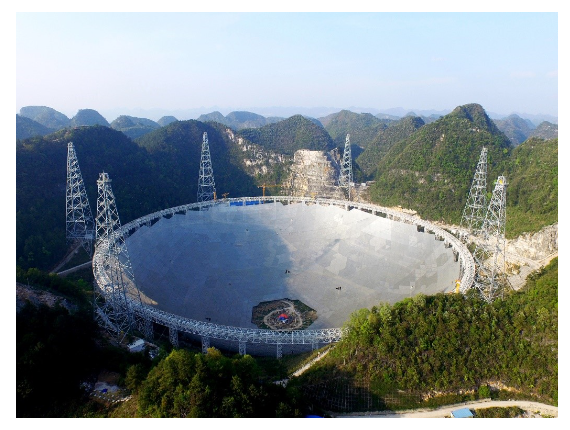
Understanding Radio Telescopes
- Role of Radio Telescopes
- Detect and amplify radio waves from space to enhance astronomical understanding.
- Observations in various parts of the electromagnetic spectrum, including radio waves, gamma rays, X-rays, and infrared radiation.
- Components of a Radio Telescope
- Antennas collect radio waves.
- Receiver and amplifier boost weak signals.
- Recorder maintains a record of the signal.
- Operational day and night.
Giant Metrewave Radio Telescope (GMRT)
- Overview of GMRT
- Located near Narayangaon, Pune, with 30 steerable parabolic radio telescopes.
- Operational since 2000, investigates diverse radio astrophysical problems.
- Recognized with the IEEE Milestone facility in 2021.
- National Centre for Radio Astrophysics
- Part of TIFR, Pune University Campus.
- Originated from the Radio Astronomy Group of TIFR in the 1960s under Prof. Govind Swarup's leadership.
Square Kilometer Array Observatory (SKAO)
- About SKAO
- International radio telescope project in Australia and South Africa.
- Aims to transform understanding of the Universe through global collaboration.
- Construction began in December 2022 with two phases: SKA1 and a potential later phase called SKA2.
- India's Role in SKAO
- India, through NCRA and other institutions, involved since the 1990s.
- Significant contribution to the development and operation of the Telescope Manager element, crucial software for the telescope.
- Recent financial sanction of Rs 1,250 crore by the Central Government.
Gravitational Waves and LIGO
- Understanding Gravitational Waves
- 'Ripples' in space-time caused by energetic processes in the Universe.
- Predicted by Einstein in 1916, carrying information about their origins and nature of gravity.
- Laser Interferometer Gravitational-Wave Observatory (LIGO)
- World's largest gravitational wave observatory.
- Operates two widely-separated interferometers in the U.S. to detect gravitational waves.
Source: IE
India as a MICE Destination
In News: The Ministry of Commerce & Industry is actively positioning India as a prominent global destination for MICE (Meetings, Incentives, Conferences, and Exhibitions).
Understanding MICE (Meetings, Incentives, Conferences, and Exhibitions)
- Overview
- MICE, a term in the tourism and events sector, categorizes business and corporate tourism activities.
- Encompasses organizing events, meetings, conferences, exhibitions, and incentives for companies and groups.
- MICE Tourism in India
- Aims to facilitate networking, knowledge exchange, business collaborations, and product/service showcasing in a professional context.
- Creates a platform for meaningful conversations among business, industry, government, and the academic community.
- Scope in India
- India boasts core MICE infrastructure comparable to developed countries.
- Improved rankings in World Bank Ease of Doing Business and WEF Travel and Tourism Competitiveness (54th in 2021).
- Rapid progress in Information Technology and Scientific Research reflects India's growing economic strength.
- Global Scenario and India
- ICCA ranks countries based on international association meetings.
- In 2019, the USA led with 934 meetings, followed by Germany and France.
- India holds less than 1% share in global MICE business, ranking 28th with 158 meetings in ICCA's 2019 rankings.
- Major Strategies
- "Meet in India" Brand
- Promoting the MICE industry.
- Infrastructure Status
- Providing financing infrastructure status for MICE.
- Skill Development
- Focusing on skill development for the MICE industry.
- "Meet in India" Brand
Source: PIB
Pelagic Birds
In News: Throughout 2023, bird enthusiasts successfully documented rare 'pelagic' birds right off the coast of Karnataka.

Understanding Pelagic Birds
- Overview
- Pelagic birds spend a significant part of their lives on the open ocean.
- They can be blown onto land during storms and high winds, typically coming inland only for breeding.
- Features
- Vary in size and appearance but share a habitat on open water, diving for food, and excelling at swimming.
- Possess long, slender wings for extended flights, with some capable of staying airborne for days or weeks.
- Unique salt gland extracts salt from seawater, preventing toxic accumulation.
- Feed on planktonic crustaceans, squid, and fish far from land.
- Examples
- Well-known species include the Laysan Albatross, known for breeding in Hawaiian islands and roaming the Pacific for feeding.
- Other pelagic birds include Sooty Shearwater, Brown Skua, Brown Booby, Streaked Shearwater, Masked Booby, Pomarine Skua, Arctic Skua, Long-tailed Skua, Swinhoe's Storm-petrel, Wilson’s Storm-petrel, and more.
- Threats
- Human activities pose threats to remote open ocean birds.
- Global seabird threats arise from terrestrial nesting grounds and oceanic factors.
- Challenges include oil spills, climate change affecting prey availability, and fishing nets.
- Pelagic bird density decline may link to decreasing fish populations, influenced by factors like sea rains pushing fish to deeper waters.
- Plastic pollution poses a significant risk as birds mistake plastic fragments for prey, leading to ingestion and associated health risks.
Source: DTE
Snow Leopard (Panthera uncia)
In News: Kyrgyzstan has formally designated the Snow Leopard (Panthera uncia) as its national symbol, underscoring its dedication to conservation and maintaining ecological equilibrium.
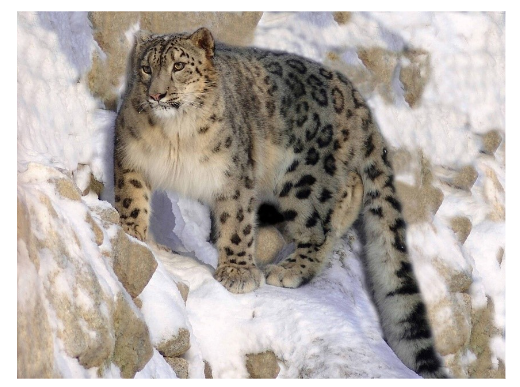
About Snow Leopard
- The snow leopard holds significant cultural importance in Kyrgyzstan, featuring prominently in the tale of Manas, a revered Kyrgyz folk hero symbolizing greatness, courage, and resilience.
- Often referred to as the 'ghost of the mountains,' the snow leopard has become an integral part of Kyrgyz culture.
- These elusive creatures play a crucial role in maintaining ecological balance, occupying one-third of the global territory.
- Their dwindling population poses risks to various species, emphasizing the importance of their conservation.
- Adapted to high-altitude terrains, snow leopards possess a unique physique that ensures agility in steep, rugged environments.
- However, they face threats from poaching, habitat loss, declining prey, human-wildlife conflict, and the impact of warming in the high Himalayas.
- Recognizing the significance of snow leopards, the Government of India has designated them as a flagship species for the high-altitude Himalayas.
- The development of Project Snow Leopard reflects India's commitment to conserving both the species and its habitats.
Source: DTE
Warli Tribe
In News: The Indigenous Warli Tribe, residing in proximity to Sanjay Gandhi National Park in Maharashtra, imparts a valuable lesson on harmonious coexistence with leopards.
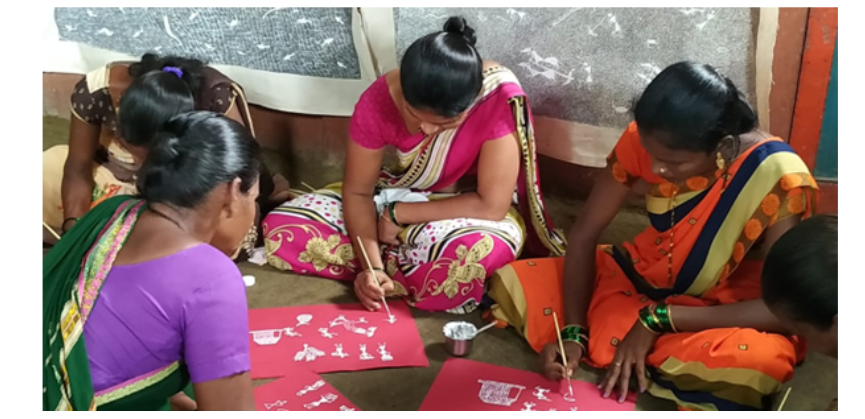
Warli Tribe Overview
- The Warli Tribe is an Adivasi indigenous community residing in the mountainous, coastal, and bordering regions of Gujarat and Maharashtra. The term 'Warli' is derived from 'Warla,' meaning 'piece of land.'
- Language
- The Warli people speak Varli or Warli, an Indo-Aryan language, often classified as Marathi, Konkani, or Bhil.
- Culture
- Embracing animistic beliefs, the Warli Tribe has its unique way of life, customs, and traditions, incorporating elements of Hindu beliefs.
- Their culture revolves around Mother Nature, prominently depicted in Warli paintings.
- Folk art, deities, and ritual culture are highly valued, with women predominantly creating paintings reflecting traditional life.
- Style & Attire
- Warli Tribe women wear Lugden, a knee-length sari influenced by Maharashtrian rural regions.
- Festival
- Bohada, a three-day mask festival, features mask owners wearing and performing with masks.
- Dance & Music
- The Warli Tribes engage in Tarpa Dance accompanied by Tarpa music instruments.
- Group performances involve circle formations, with one person playing the Tarpa instrument in the center while others dance around.
Source: DTE
New Hit-and-Run Law
In News: The nationwide truckers' protest has recently been called off following the government's assurance to consult stakeholders before enforcing a controversial law against hit-and-run incidents.
New Hit-and-Run Law Overview
- Bharatiya Nyay Sanhita (BNS)
- Replaces the British-era Indian Penal Code (IPC).
- Under BNS, causing a serious road accident due to careless driving, followed by leaving without informing authorities, may result in up to 10 years in jail and a Rs 7 lakh fine.
- Categories Under "Causing Death by Negligence"
- BNS establishes two categories:
- First category addresses death caused by a rash or negligent act not amounting to culpable homicide, with potential imprisonment up to five years and a fine.
- Second category deals with death caused by rash and negligent driving not amounting to culpable homicide, carrying up to 10 years imprisonment and a fine if the offender fails to promptly report the incident.
Previous Hit-and-Run Law
- Under Old IPC
- The British-era IPC lacked specific provisions for hit-and-run cases.
- Actions were taken under IPC Section 304A.
- Offenders causing death due to a reckless or negligent act faced a maximum jail term of two years or a fine.
Understanding Culpable Homicide in IPC
- Definition in IPC
- Culpable Homicide refers to causing death through acts with the intention of causing death, intending to cause severe bodily injury likely to cause death, or having knowledge that the act is likely to cause death.
- Distinct from murder, it lacks certain elements of premeditation and extreme culpability.
- Section 299 IPC focuses on the offender’s intention and knowledge, playing a crucial role in distinguishing various degrees of criminal liability for causing another person's death.
Source: NDTV
The Karman Line
In News: The Karman Line, much like the idea of international waters, does not have a distinct national demarcation.
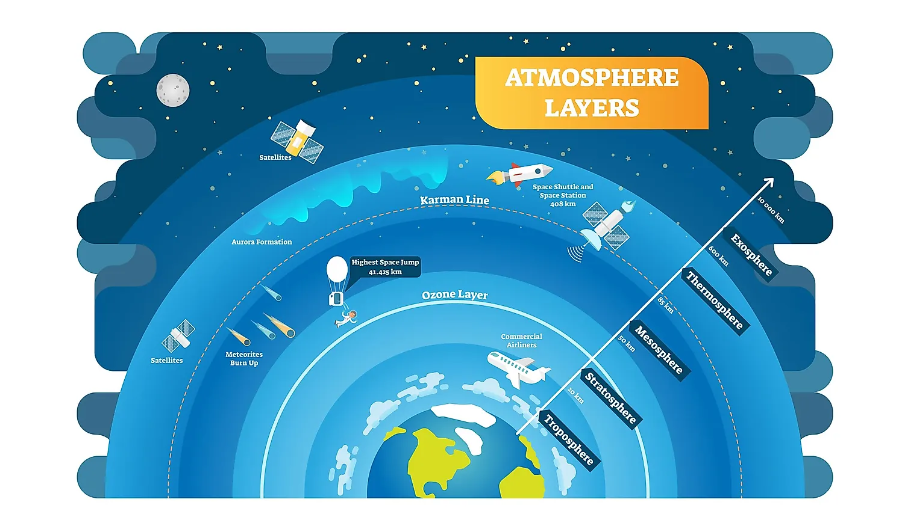
Understanding the Karman Line
- Location and Definition
- The Karman Line is an imaginary boundary situated at 100 km (62 miles) above sea level, separating Earth's atmosphere from space.
- Established in the 1960s by the Fédération Aéronautique Internationale (FAI).
- Named after aerospace pioneer Theodore von Kármán.
- Controversy and Recognition
- While some entities, like the Federal Aviation Administration, NASA, and the U.S. military, place the space boundary at 80 km (50 miles), a majority of countries and space organizations recognize the Karman Line.
- Despite differing opinions, it serves as a widely acknowledged demarcation between Earth's sky and space.
- Operational Significance
- Practical in marking the altitude where traditional aircraft can no longer effectively fly due to the thinning atmosphere.
- Craft above the Karman Line require propulsion systems independent of Earth's atmospheric lift.
- Astronaut Qualification
- Crossing the Karman Line qualifies an individual as an astronaut.
- Signifies the shift in physical laws governing a craft's ability to fly.
- Importance and Legal Framework
- The 1967 Outer Space Treaty advocates for space accessibility to all countries for scientific investigation.
- Defining a legal boundary helps prevent disputes, facilitates tracking of space activities, and regulates human space travel.
Source: FE
Hattee Community
In News: The Himachal Pradesh state government has recently issued an official notification granting Scheduled Tribe (ST) status to the Hattee community residing in the Trans-Giri area of Sirmaur district.
Exploring the Hattee Community
- Origins and Naming
- The Hattee community is tightly-knit and derives its name from the practice of selling homegrown produce, meat, wool, etc., at local markets known as 'haat' in towns.
- Geographical Homeland
- The community's homeland spans the Himachal-Uttarakhand border within the Giri and Tons river basins, both tributaries of the Yamuna.
- Distinctive Attire and Geography
- During ceremonies, the Hattee community's men often wear a unique white headgear.
- Geographically separated from Sirmaur by the Giri and Tons rivers, with the Tons acting as a boundary with the Jaunsar Bawar area of Uttarakhand.
- Historical Background
- The Hattees in the trans-Giri area and Jaunsar Bawar were originally part of the royal estate of Sirmaur until the separation of Jaunsar Bawar in 1815.
- Traditional Governance
- Governed by a traditional council known as Khumbli, which plays a key role in community affairs.
- Clans and Traditions
- Two Hattee clans, residing in Trans-Giri and Jaunsar Bawar, share similar traditions, and inter-marriages within the community are common.
Source: TH
Governors in Focus: Advocating Reform in India
In News: A recent article delves into the hurdles presented by the role of Governors in the daily operations of democratically elected state governments and emphasizes on necessary reforms.
Evolution of the Governor's Office
- Pre-Independence Era
- Since 1858, during British rule, Provincial Governors acted as agents of the crown, supervised by the Governor-General.
- Government of India Act, 1935
- Governors were to follow the advice of provincial legislature ministers but retained special responsibilities and discretionary powers.
- Post-Independence Transition
- The Constituent Assembly debated and retained the Governor's post, reorienting its role to align with India's new governance systems.
Constitutional Provisions Governing Governors
- Article 153
- Mandates a Governor for each state, with one person potentially appointed for multiple states.
- Article 155 and 156
- Governor appointed by the President holds office at the President's pleasure.
- Article 161
- Empowers the Governor to grant pardons, reprieves, etc., with a requirement to act on the advice of the state government.
- Article 163
- Establishes a council of ministers to aid and advise the Governor, outlining conditions for discretion.
- Articles 200 and 201
- Define the Governor's powers regarding the passage of bills in the state legislature.
- Article 361
- Grants immunity to the Governor from court proceedings for the exercise of powers and duties.
Challenges and Issues Surrounding the Governor's Role
- Affiliation-Based Appointments
- Politicians affiliated with the ruling party appointed as Governors raise concerns about impartiality and non-partisanship.
- From Representative to Agent
- Critics label Governors as 'agents of the Centre,' potentially following Union Council of Ministers' instructions.
- Misuse of Discretionary Powers
- Governors' discretionary powers, particularly in recommending President's Rule, have been questioned for political motives.
- Removal of Governors
- Absence of clear grounds or procedures for removal has led to arbitrary dismissals.
- Constitutional Loopholes
- Ambiguities in the Constitution regarding the exercise of powers contribute to conflicts with state governments.
Suggested Constitutional Reforms
- Sarkaria Commission (1988)
- Emphasizes transparent appointments, Governor's role as a bridge, and judicious use of discretionary powers.
- S.R. Bommai Judgment (1994)
- Asserts the floor of the Assembly as the forum for testing the majority, limiting Governor's subjective opinion.
- Venkatachaliah Commission (2002)
- Recommends a committee for Governor appointments, completion of five-year terms, and limited interference in state administration.
- Punchhi Commission (2010)
- Proposes removal by state legislature resolution and deletion of 'during the pleasure of the President.'
- BP Singhal vs Union of India (2010)
- Affirms President's authority to remove Governors without reason but disallows arbitrary grounds.
- Nabam Rebia Case (2016)
- Clarifies Governor's limited discretionary power against or without Cabinet advice.
- NCT of Delhi vs Union of India (2018)
- Stresses the need for Governors to uphold constitutional morality and principles.
- Kaushal Kishor vs State of UP (2023)
- Affirms public functionaries' freedom of expression with reasonable restrictions.
Conclusion
The discourse on Governors in India calls for nuanced reforms, balancing transparency, accountability, and limited discretionary powers. Abolition is seen as imprudent, emphasizing the need to align the Governor's office with democratic principles.
|
UPSC Previous Year Questions Prelims (2014) Q. Which of the following are the discretionary powers given to the Governor of a State?
Select the correct answer using the code given below: (a) 1 and 2 only Ans: (b) Mains (2018) Q. Whether the Supreme Court Judgment (July 2018) can settle the political tussle between the Lt.Governor and elected government of Delhi? Examine. Mains (2022) Q. Discuss the essential conditions for exercise of the legislative powers by the Governor. Discuss the legality of re-promulgation of ordinances by the Governor without placing them before the Legislature. |
Source: TH
Share the article
Edukemy’s Current Affairs Quiz is published with multiple choice questions for UPSC exams
MCQ
Get Latest Updates on Offers, Event dates, and free Mentorship sessions.

Get in touch with our Expert Academic Counsellors 👋
FAQs
UPSC Daily Current Affairs focuses on learning current events on a daily basis. An aspirant needs to study regular and updated information about current events, news, and relevant topics that are important for UPSC aspirants. It covers national and international affairs, government policies, socio-economic issues, science and technology advancements, and more.
UPSC Daily Current Affairs provides aspirants with a concise and comprehensive overview of the latest happenings and developments across various fields. It helps aspirants stay updated with current affairs and provides them with valuable insights and analysis, which are essential for answering questions in the UPSC examinations. It enhances their knowledge, analytical skills, and ability to connect current affairs with the UPSC syllabus.
UPSC Daily Current Affairs covers a wide range of topics, including politics, economics, science and technology, environment, social issues, governance, international relations, and more. It offers news summaries, in-depth analyses, editorials, opinion pieces, and relevant study materials. It also provides practice questions and quizzes to help aspirants test their understanding of current affairs.
Edukemy's UPSC Daily Current Affairs can be accessed through:
- UPSC Daily Current Affairs can be accessed through Current Affairs tab at the top of the Main Page of Edukemy.
- Edukemy Mobile app: The Daily Current Affairs can also be access through Edukemy Mobile App.
- Social media: Follow Edukemy’s official social media accounts or pages that provide UPSC Daily Current Affairs updates, including Facebook, Twitter, or Telegram channels.

